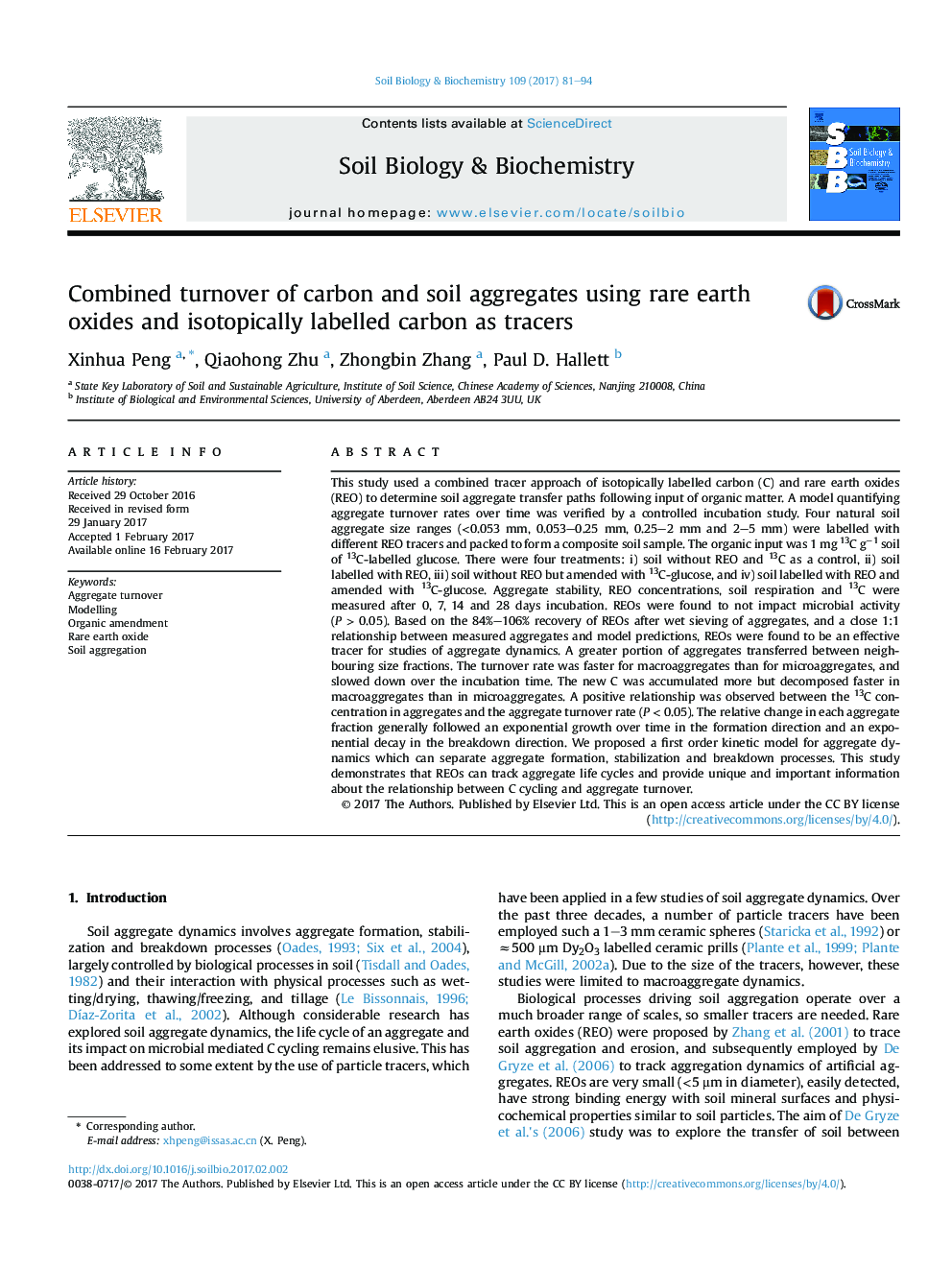| کد مقاله | کد نشریه | سال انتشار | مقاله انگلیسی | نسخه تمام متن |
|---|---|---|---|---|
| 5516477 | 1542575 | 2017 | 14 صفحه PDF | دانلود رایگان |
- Rare earth oxides (REO) were used to track soil aggregate dynamics.
- Methodology for aggregate turnover rate and time was proposed.
- Macroaggregate turnover is faster than microaggregate turnover.
- Aggregate turnover rate is related with C dynamics.
- Aggregate formation, stabilization and breakdown follow a first order kinetic model.
This study used a combined tracer approach of isotopically labelled carbon (C) and rare earth oxides (REO) to determine soil aggregate transfer paths following input of organic matter. A model quantifying aggregate turnover rates over time was verified by a controlled incubation study. Four natural soil aggregate size ranges (<0.053Â mm, 0.053-0.25Â mm, 0.25-2Â mm and 2-5Â mm) were labelled with different REO tracers and packed to form a composite soil sample. The organic input was 1Â mg 13C gâ1 soil of 13C-labelled glucose. There were four treatments: i) soil without REO and 13C as a control, ii) soil labelled with REO, iii) soil without REO but amended with 13C-glucose, and iv) soil labelled with REO and amended with 13C-glucose. Aggregate stability, REO concentrations, soil respiration and 13C were measured after 0, 7, 14 and 28 days incubation. REOs were found to not impact microbial activity (PÂ >Â 0.05). Based on the 84%-106% recovery of REOs after wet sieving of aggregates, and a close 1:1 relationship between measured aggregates and model predictions, REOs were found to be an effective tracer for studies of aggregate dynamics. A greater portion of aggregates transferred between neighbouring size fractions. The turnover rate was faster for macroaggregates than for microaggregates, and slowed down over the incubation time. The new C was accumulated more but decomposed faster in macroaggregates than in microaggregates. A positive relationship was observed between the 13C concentration in aggregates and the aggregate turnover rate (PÂ <Â 0.05). The relative change in each aggregate fraction generally followed an exponential growth over time in the formation direction and an exponential decay in the breakdown direction. We proposed a first order kinetic model for aggregate dynamics which can separate aggregate formation, stabilization and breakdown processes. This study demonstrates that REOs can track aggregate life cycles and provide unique and important information about the relationship between C cycling and aggregate turnover.
Journal: Soil Biology and Biochemistry - Volume 109, June 2017, Pages 81-94
